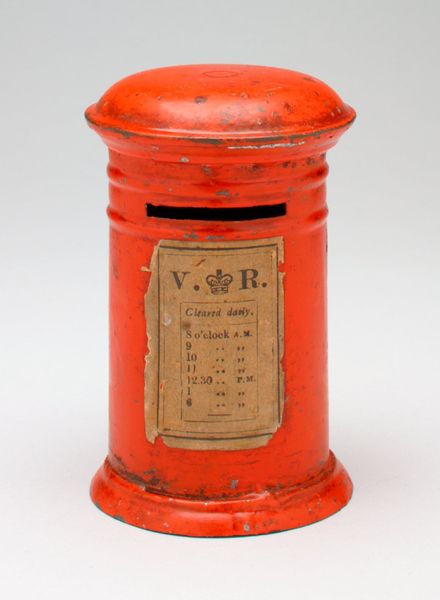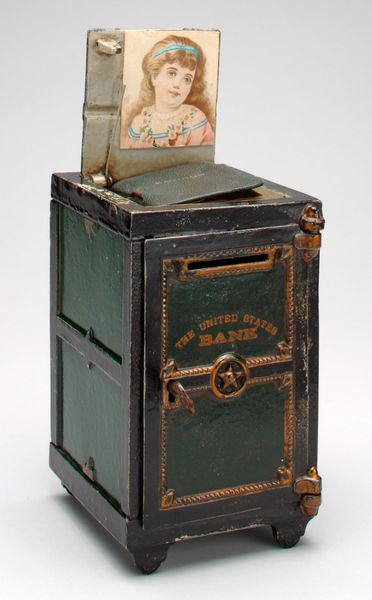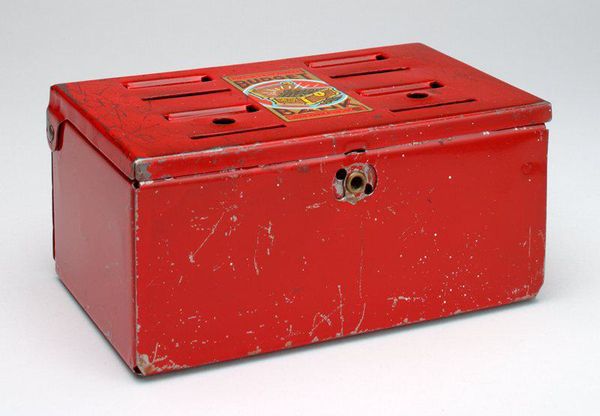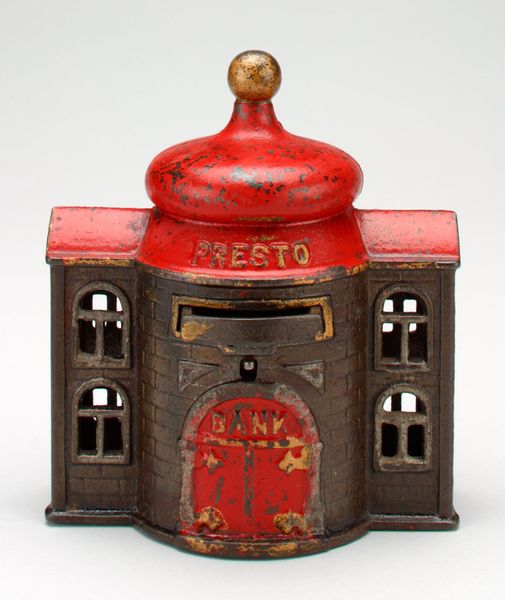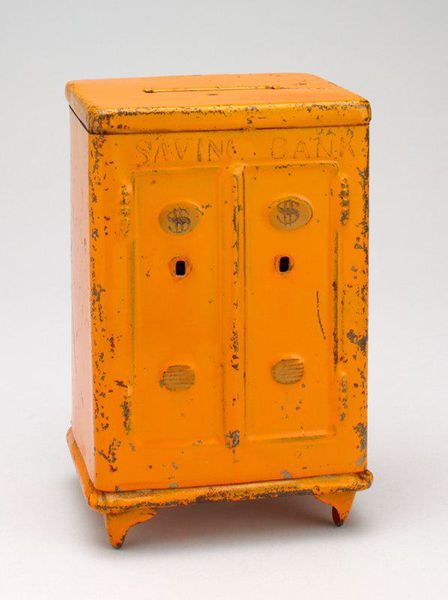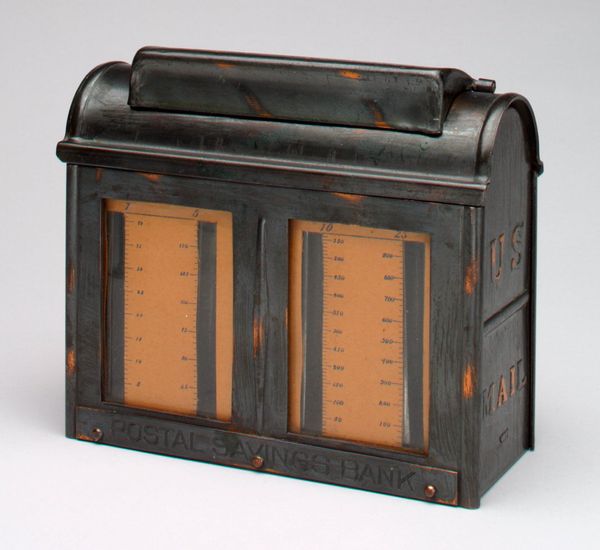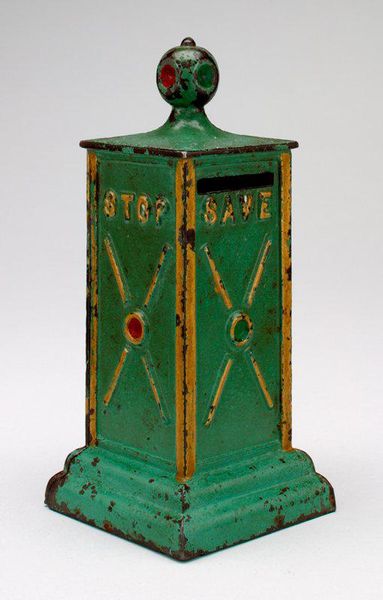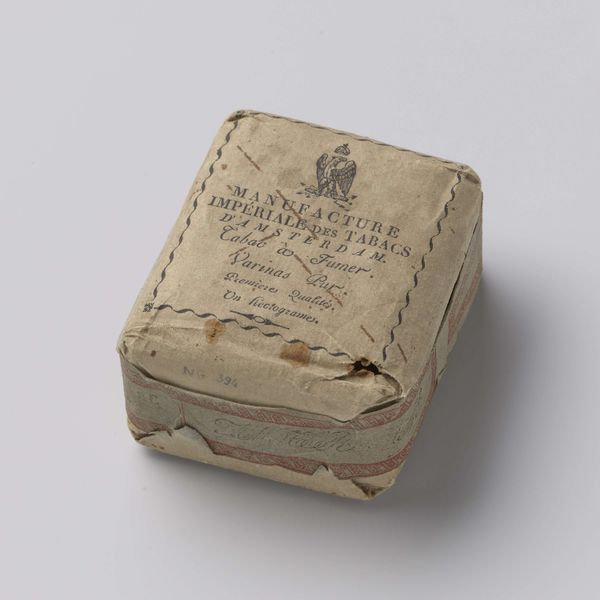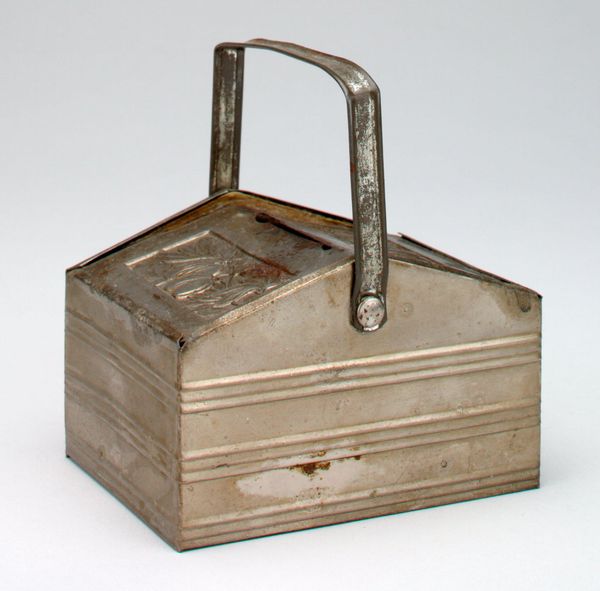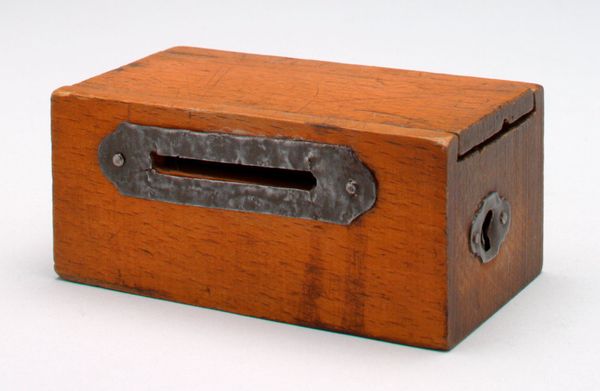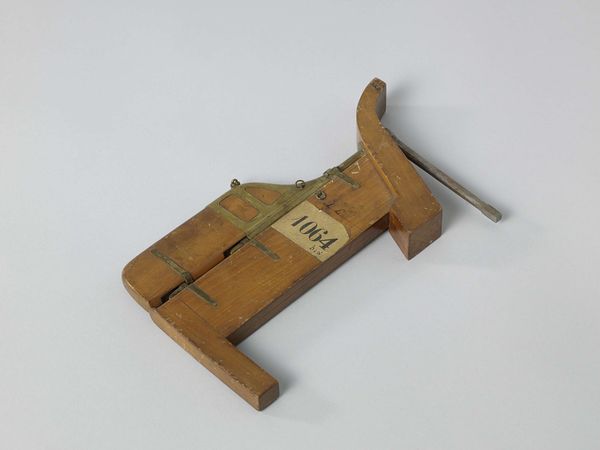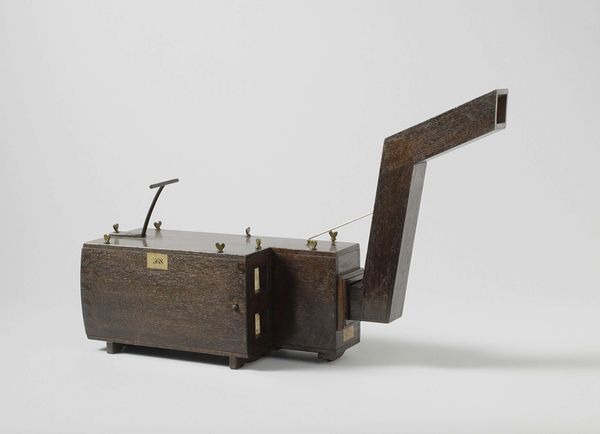
graphic-art, pigment, metal
#
advertising product shot
#
graphic-art
#
product studio photography
#
pigment
#
product promotion photography
#
metal
#
food packaging
#
product photography advertising
#
product fashion photography
#
lifestyle product photography
#
england
#
graphic design product photography
#
product photography
#
decorative-art
#
retail photography
Dimensions: 4 1/2 x 2 1/4 x 2 1/2 in. (11.43 x 5.72 x 6.35 cm)
Copyright: Public Domain
Editor: So, here we have "-Postbox- still bank" from 1875. It’s an anonymous piece using metal and pigment, housed here at the Minneapolis Institute of Art. It strikes me as incredibly direct, almost utilitarian in its design. How do you interpret this object, beyond its immediate function? Curator: It's interesting you call it utilitarian. On one level, yes, it mimics the very visible, very public red postboxes popping up across England during the reign of Queen Victoria. However, its function as a *bank*, not a mailbox, reframes its public role into a more personal, domestic one. Consider the socio-political implications of encouraging savings, particularly amongst the working classes in the late 19th century. What purpose would that serve the broader society? Editor: I hadn’t considered that shift in function and what it represents. It’s like a tiny piece of propaganda, almost subliminally encouraging thriftiness. Is the Post Office embracing and marketing itself by leveraging those national symbols and colours, through this kind of commercial medium? Curator: Precisely! And, think about where these banks would be placed, often in homes. The visual language of state infrastructure – the postbox – is brought inside, subtly reinforcing state presence and the importance of participating in a certain economic structure. Who do you think was targeted with that initiative? Editor: Ah, that's a brilliant connection. The object becomes more than just a decorative item. The information labels are more accessible than ever before, but I never questioned if that came from an institution looking for marketing and loyalty techniques from a wider audience. Thanks for expanding the interpretation. Curator: My pleasure! Examining art this way unveils hidden stories of power, influence, and everyday life that are not as innocent as one might believe at first sight.
Comments
No comments
Be the first to comment and join the conversation on the ultimate creative platform.
